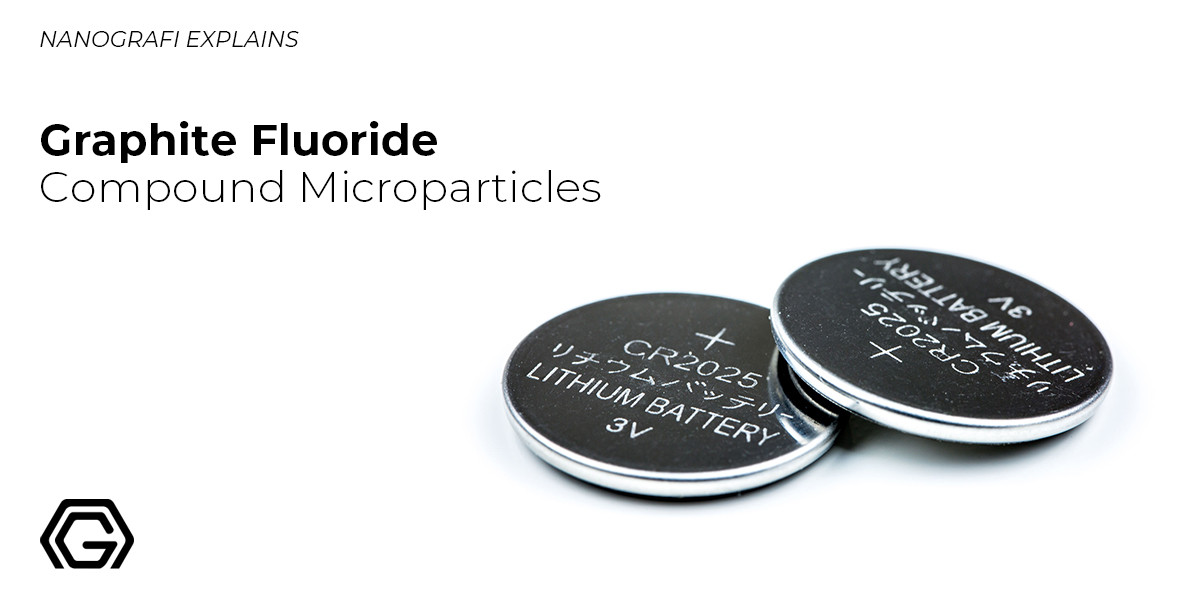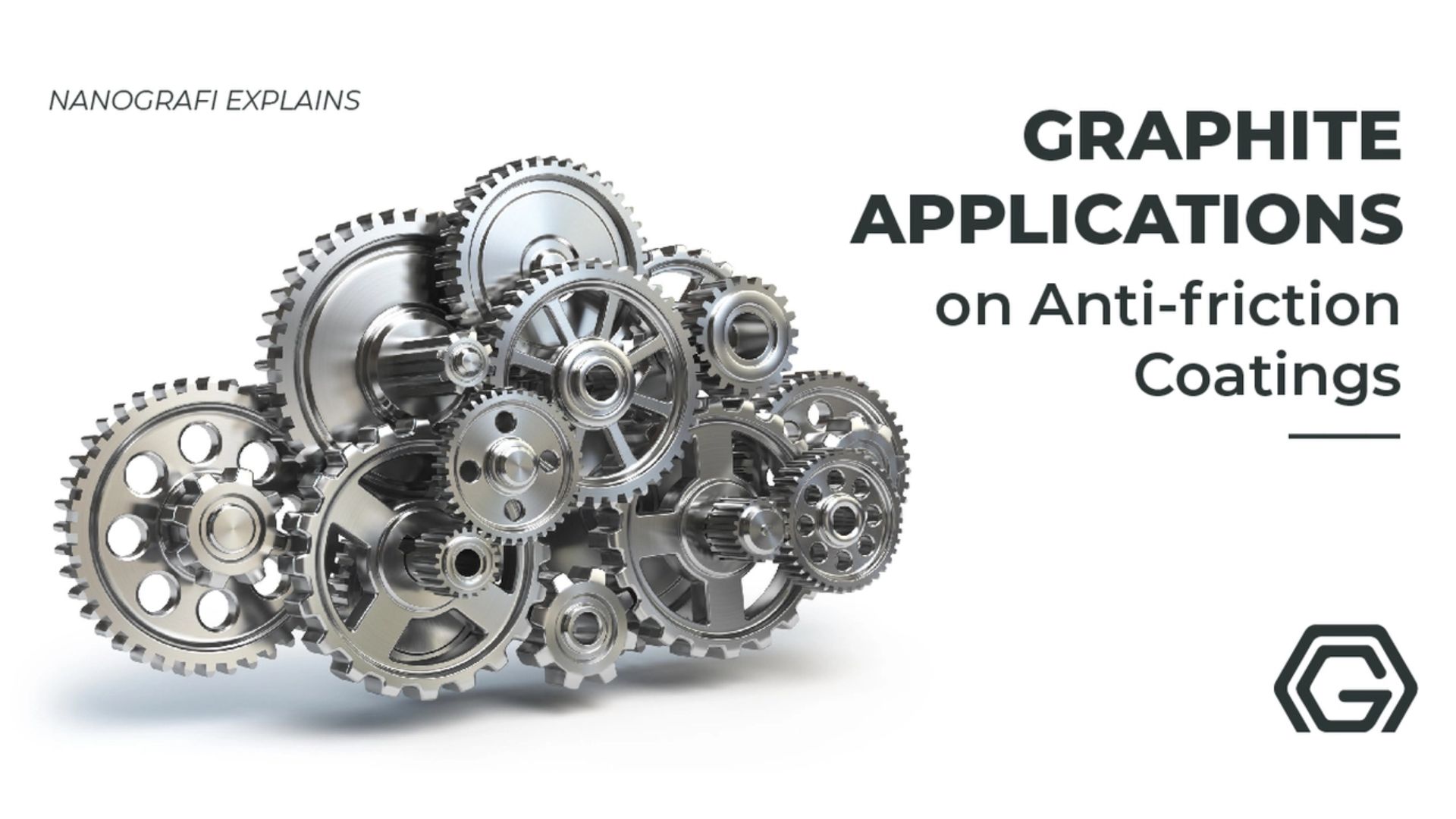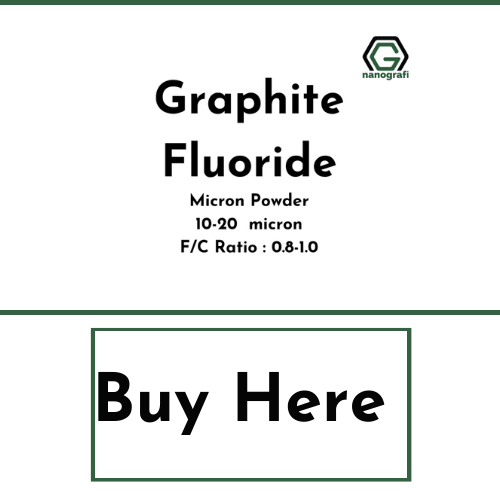Graphite Fluoride Compound Microparticles
Graphite fluoride compound microparticles are produced from graphite by reacting it with fluorine gas at high temperatures of usually around 500 to 600 degree Celsius.
The microparticle form is in the powder form, which is very soft in texture. It is very hydrophobic. Its surface energy is very low.
Introduction
It has been found to work under extreme conditions retaining its properties hence the use in rocket propellers. It is a very widely used solid lubricant, with exceptional abilities to prevent wear and tear. It is also used in paints to make it hydrophobic in water-resistant paints and weather-resistant paints. Another remarkable discovery is the discovery of Graphite fluoride's role in lithium batteries as a cathode. It is being utilized in many industries, and many new pieces of research are being done. Those researches are based on finding the exact properties of the compound along with its potential uses in the different industries.
Characteristics of Graphite Fluoride
Graphite is the naturally existing form of carbon. It is a crystalline form present usually in the igneous and the metamorphic rock layers. The atoms of carbon are structured in a hexagonal shape. Out of all the forms of carbon, it is the most stable one under normal environmental conditions. It is produced when carbon material is exposed to very high temperatures and pressures. Further increased temperatures and pressures convert the graphite into the diamond, which is known for its preciousness. Synthetic graphite can also be made by treating the high-carbon materials with the very high temperatures of the range 2550 to 3000 degrees Celsius. Through this procedure, we can obtain the graphite with purity levels reaching the 99 per cent mark.
Physically, graphite is exceptionally soft and flexible. Its color is iron black to steel grey. Its specific gravity has been found to be very low, i.e. 1.9 to 2.3. It is a non-elastic in nature. Moreover, it cleaves on the application of very little pressure. The graphite is usually found naturally in different types and varieties. One type is flake graphite which consists of straight plate-like particles. The amorphous form of graphite is the name given to very fine flake graphite. The lump or vein graphite usually presents as platy intergrowths of fibrous or acicular crystalline aggregates. It is found in the fissures and veins of the earth crust. The melting point of graphite is almost identical to the melting point of the diamond, i.e. around 3600oC.
Chemically, graphite is not very reactive. It usually oxidized at a very high temperature of 700oC and above when ample oxygen is available in the environment leading to the formation of carbon dioxide. As it is a partial electric conductor, it is also used in different electrical appliances. It is soluble in molten nickel and even in warm chlorosulfuric acid.
Graphite fluoride is known by multiple names, for example, carbon monofluoride, polycarbon monofluoride, polycarbon fluoride, etc. It is formed by a particular chemical reaction. Usually, carbon is non-reactive to the fluorine gas at average environmental temperatures. It has been observed that up to 400 degree Celsius, carbon remain very stable. But when the carbon, in the form of graphite or charcoal usually, is exposed to fluorine gas with temperature ranging between the 420 and 600 degrees Celsius, a dark grey graphite fluoride is formed. The color of the compound depends on the amount of fluorine added to the graphite. Adding large quantities of fluorine results in a creamy white color. If the reaction is carried out at a still higher temperature, fluorocarbons are generated with many more fluorine atoms. Compounds produced include the tetraflourocarbon (CF4) and tetrafluoroethylene (C2F4). Fluorine is combined with the carbon atoms with the covalent bonds. This resulting compound is hence then utilized in a vast range of applications that are nowadays very important.
Graphite Fluoride Compound Microparticles
The graphite fluoride is usually available in different forms. The two most common variant is (CF)n and (C2F)n. The first one has a chair type structure which differs it from the latter. Macroscopically, the graphite fluorite is present in different commercial forms, from bigger particles ranging in various sizes to microparticles having powder-like consistency. It is famous for its role as the cathode in many batteries. It has oxidizing power also, which is also being utilized. Hence, different types or forms of graphite fluoride are used in various applications according to the needs.
Background
The history of graphite is as old as humanity itself. The first confirmed example of the use of graphite is from the 4th century BC by the infamous Marita Culture. They used it for the decoration and designing of the pottery with the help of a ceramic paint containing the ingredient of graphite. In the middle ages, it has been used for marking purposes, for example marking the animals. It also found use in the weapon industry and reformed the strength of the British military. As more work was done in the study of graphite and its properties, it became more useful and started to be utilized as a lubricant, pencils, polish, etc. It was also named as plumbago or black lead back then. With the advent of science and technology, more of the compounds of graphite were discovered such as the graphite fluoride which further extended the uses of the graphite.
Properties of Graphite Flouoride
Graphite fluoride has a very low surface energy which serves between the electrode and bath as a gaseous insulating film. It has very unique chemical and physical properties which interest it in the usage in many functions. Along with the low surface energy, it also has solid lubricating features. Also, its remarkable ability to oxidize has been recognized, and a lot of uses have been proposed in various industrial fields. These properties do vary in the different forms and varieties of the graphite fluoride. Apart from all the information above, the exact structure and surface properties of the graphite fluoride compound are still debatable as enough research has not been done with the right equipment. The energy requirement for the exfoliation was measured and compared for the graphite fluoride with the pure graphite. The result proved the energy requirement for graphite fluoride to be lower.
To get more information about applications of graphite,
you can read our blog post here.
Applications of Graphite Fluoride
- It has been commonly used as a solid lubricant, usually replacing the pure graphite.
- Due to its low surface energy, it has found a role in the batteries as a cathode material.
- It has also been utilized for controlling the wettability of different surfaces.
- Another use is in the paints where it is used as an additive to make the paint weather resistant.
- In rocket propellants, it has been used as combustion modifier.
- As told in the properties, its oxidizing abilities also have a high potential for usage in many industries.
- Other uses as water and oil repellant.
Use of Graphite Fluoride As Solid Lubricant
Pure graphite has been used as a lubricant for many ages. The exceptional abilities of graphite in the powder form made it one of the best solid lubricants. It was very widely used as it was cheap and abundant supplies were available. But since the discovery of the graphite fluoride, the use of graphite has significantly declined. Researches have shown that even minimal amounts of fluorine in the graphite fluoride enhanced the lubricating properties of the pure graphite by multiple folds. The primary function of a lubricant is supposed to be decreasing the friction between the sliding surfaces and minimize the wear and tear of the equipment and also prevent the extra heat generation. All these functions have been addressed by the graphite fluoride very effectively hence proving its importance as a solid lubricant. An experiment designed to test its effectiveness by measuring the friction between three surfaces with different amount of graphite fluoride placed was conducted. It concluded that the surfaces with more graphite fluoride remained unharmed even after vigorous testing.
Use of Graphite Fluoride in Lithium Batteries
The use of graphite fluoride in the batteries has increased after the 1960s. The importance is of fluorine which helps create a cell with a very high electromotive force. But fluorine can not be used as gas as it is very reactive (belongs to 7th group of the periodic table). Many of the compounds of fluorine were tested time and again but no success was obtained up until the discovery of graphite fluoride. In the lithium battery, the cathode is made up of the graphite fluoride, and the anode is made up of Lithium. As compared to other batteries not containing the graphite fluoride, these batteries have high energy density and are high voltage. Their discharge potential has been recorded to be flat. Its discharging capabilities have been tested over a vast range of temperatures. It is safer than most other batteries out there in the market. Another essential feature is the long life of the graphite fluoride batteries.
Use of Graphite Fluoride in Paints
The use of graphite in paint is the oldest example available for the use of graphite in the history of humankind. In the properties, we have told that graphite fluoride is very hydrophobic and this ability is usually utilized in making of the water-resistant and weather-resistant paints. The water contact angle of graphite fluoride (it tells the measure of hydrophobicity) is higher than 150o. It forms a superhydrophobic film and has super low surface energy, as explained below. The film formed is ultra-thin with the extraordinary stability of the dispersion. The surface film of graphite fluoride has a minimal adsorption rate of water molecules.
Conclusion
So, the graphite fluoride is the latest edition to the family of graphite compound. Many of its properties and potential functions are still under study, which makes it an exciting subject for the researchers. The use of graphite fluoride microparticles as solid lubricant has revolutionized the lubricant industry. The industry of batteries has also been severely affected by the introduction of graphite fluoride cathodes in the lithium batteries. From all these uses, we can get the idea of how vital is graphite fluoride for the industries today and how it has integrated itself in the modern industrial age. The potential for its uses is limitless as new researches are being done and newer properties are being discovered. There are a lot of proposed and experimental applications of graphite fluoride microparticles, which are under review to start the commercial production. Another thing that makes graphite fluoride compound microparticles unique is its ability to retain its properties under very severe conditions such as high temperatures in rocket propellers.
To get more information, you can visit Blografi.
References
https://en.wikipedia.org/wiki/Graphite
https://cutt.ly/pXg4aiR
https://en.wikipedia.org/wiki/Carbon_monofluoride
https://pubs.acs.org/doi/pdf/10.1021/ja00508a020
https://www.sciencedirect.com/science/article/abs/pii/S0008622315300877
https://www.tandfonline.com/doi/abs/10.1080/05698197008972282
https://patents.google.com/patent/US5712062A/en
https://cutt.ly/IXs00PC
Recent Posts
-
Fundamentals of Vibrational Spectroscopy
Vibrational spectroscopy is a fundamental analytical technique that provides molecular-level insight …13th Sep 2024 -
Simulation and Modeling of Material Properties
Our world is composed of a dazzling array of materials, each with its own unique properties that dic …12th Sep 2024 -
Comprehensive Guide to Nanoceramics
With the rapid development of nanotechnology, nanoceramic materials play an important role in many s …6th Sep 2024







